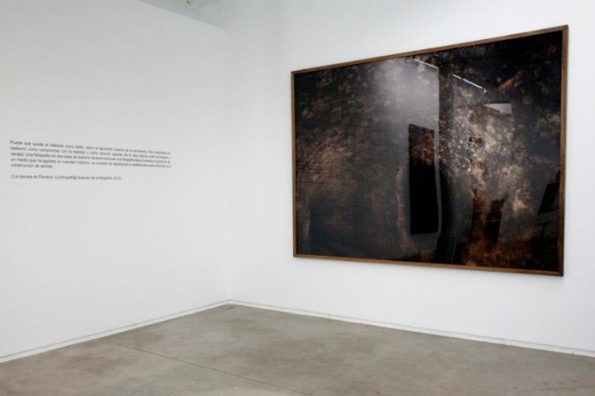Search
To search for an exact match, type the word or phrase you want in quotation marks.
A*DESK has been offering since 2002 contents about criticism and contemporary art. A*DESK has become consolidated thanks to all those who have believed in the project, all those who have followed us, debating, participating and collaborating. Many people have collaborated with A*DESK, and continue to do so. Their efforts, knowledge and belief in the project are what make it grow internationally. At A*DESK we have also generated work for over one hundred professionals in culture, from small collaborations with reviews and classes, to more prolonged and intense collaborations.
At A*DESK we believe in the need for free and universal access to culture and knowledge. We want to carry on being independent, remaining open to more ideas and opinions. If you believe in A*DESK, we need your backing to be able to continue. You can now participate in the project by supporting it. You can choose how much you want to contribute to the project.
You can decide how much you want to bring to the project.

“What the eyes see and the ears here, the mind believes.” (Harry Houdini)
At the moment any news about Fontcuberta is eclipsed by last week’s award of the Hasselblad prize. The exhibition at Angels Barcelona is a project that in its format and momentum complements the concession of the prize and also highlights one of the principal characteristics of virtually all this artist’s projects: the play between truth and fiction, a frontier along which Fontcuberta has always known how to glide effortlessly. This malleable area between the truth and the lie that materialises in photography as “ the space of almost absolute blindness” is the escape route for a photographer who confronts his work with a profound honesty despite establishing its basis in the fake, in the purest style of Orson Welles.
Creating subterranean unreal landscapes is perhaps a sort of visual metaphor for the artist’s way of working: making tunnels, seeking out new trails, impossible daydreams that also suggest spaces of conflict, places of a supposedly post-industrial or subterranean memory that generate visual icons of a no-place, lost in time and space, but sufficiently narrative to be able to tell us “something”. One can’t understand his photography without understanding that almost all his work has been directed at endeavouring to dismantle the established. His work per se contains an ideological implication, embedded in its own time and context. Project after project, Fontcuberta has dedicated himself to “masking” the real. Although it’s true that a high degree of manipulation is entailed in the contents of the mass media, just as in general the public maintains a clear divorce from any critical capacity, therefore we can affirm that we have definitively been and are on the whole gullible.
This fracture around gullibility is what Fontcuberta has always known how to explore. It’s possible that the spectator is more or less easily manipulated, the the least of it being how emphatic or absurd the message might be, because it is all subject to the interests of the medium (politicians, economists, above all power in general…) and that is where Fontcuberta demonstrates this fragility of the spectator and the impossibility of seeing the truth. This is probably a fundamental epistemological exercise in his work, that in its two most marked aspects –that of the aforementioned media and of the work as an autonomous image that is self-analytical, questioning the very aim of photography and its representations and value (as in the Fictions project in Angels Barcelona)- generates images, visual material, laying bare a medium in transformation rather than extinction, for those who await the death of analogical photography in favour of the digital.
Because the well directed inclusion in an imaginary already over saturated with images like the present is not a simple question. It seems clear that the idea of photography is not an end, so much as a means to understand in a broader fashion the spheres of knowledge, and ultimately life. If the analogical photography of Fontcuberta focuses on nature represented without an excess of subjectivity, the digital leaps towards a more narrative exercise, almost of construction and to a certain extent pictorial even. His digital photography ends up being a sort of “Info-graphic painting” or something similar, where its definition isn’t clear. Like Houdini, the artist inserts himself into this interstice between the two photographic realities, escaping the tanks and exercising like a spy of time and reality, enriching our gaze just that bit more, questioning even this, in a totally lucid tautological game.

Avelino Sala is an artist, curator and publisher. Since 2012 manages the Studio Avelino Sala space in Gracia. He lives and works in Barcelona. His work as an artist has led him to question reality with a critical look at a continuous exploring the social and political imaginary and try to stick his finger in the sore to see if art can be a generator of new spaces and experimentation capable of re -create other realities.
"A desk is a dangerous place from which to watch the world" (John Le Carré)